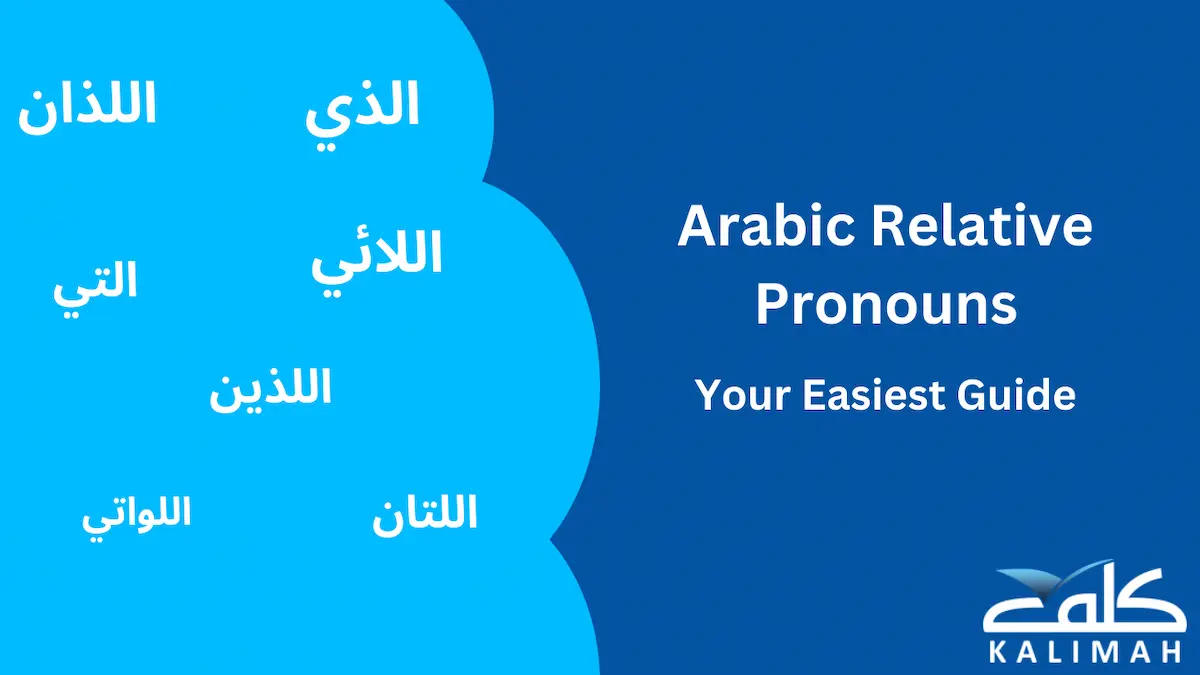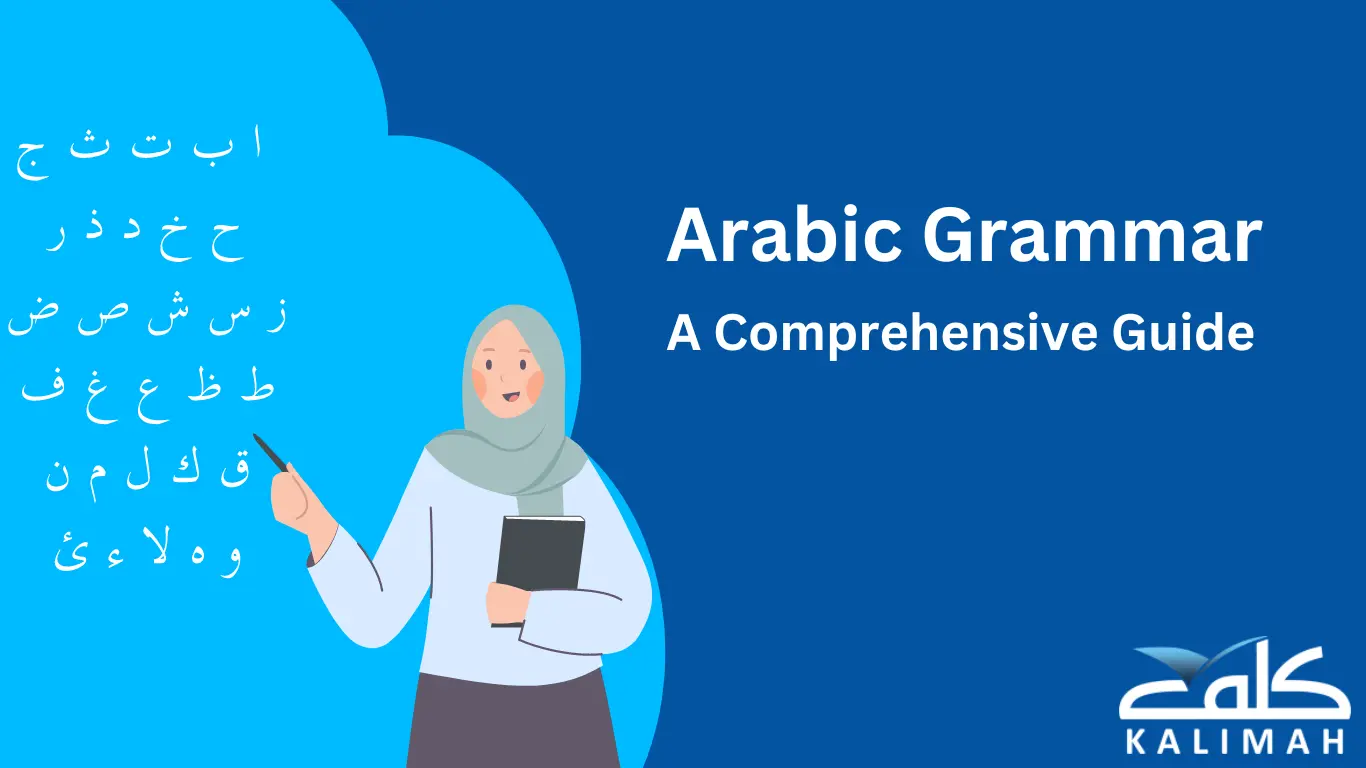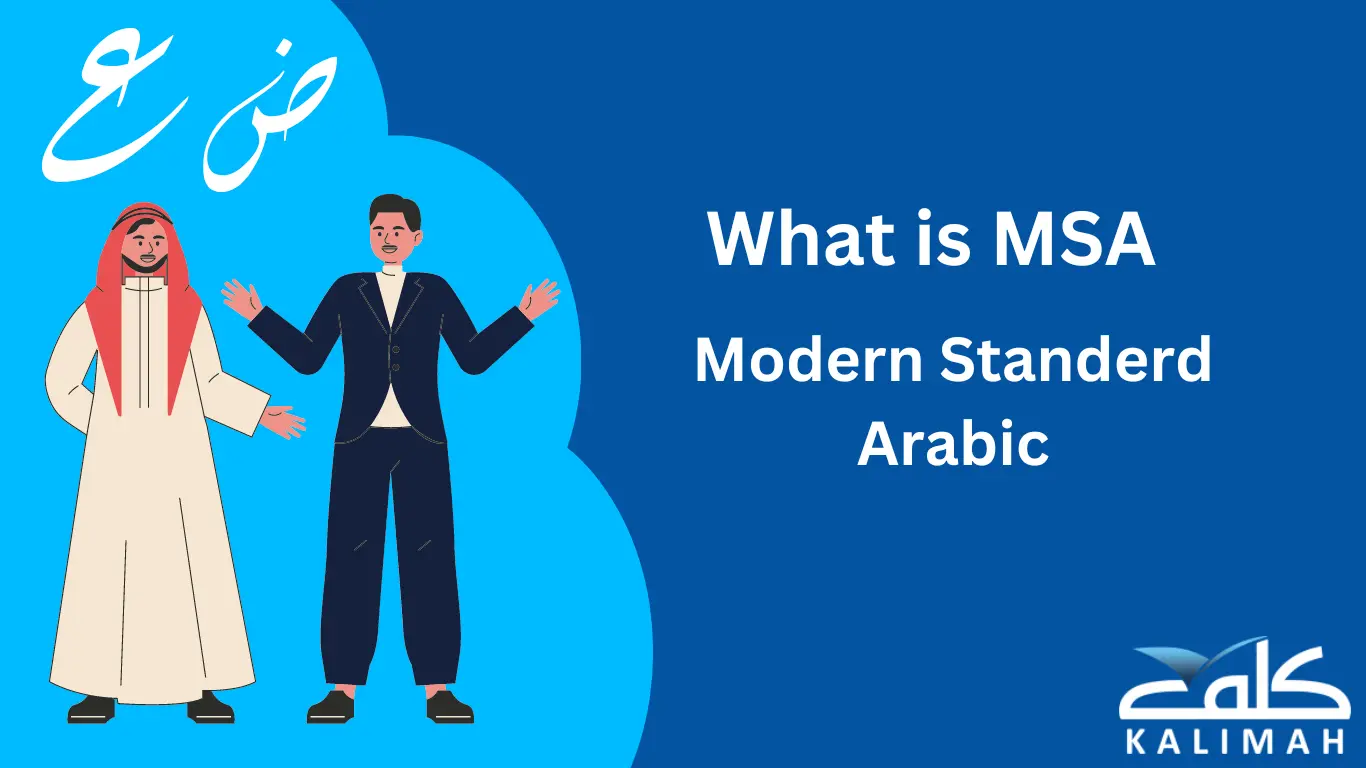A relative pronoun in Arabic grammar is a pronoun that begins a relative clause and relates it to the main sentence where it is contained. There are terms like “who,” “whose,” “which,” and so on do the same role in the English language.
Relative pronouns are used in a sentence to connect speech and to denote a specific meaning, and these relative pronouns vary according to the meaning of each of them, and according to what they refer to in terms of singularity, duality, plural, feminine, and masculine. Let’s get to know these pronouns in a brief and clearer way at the same time.
What do Arabic Relative Pronouns (Ismul Mawsool) mean?
The relative pronoun indicates that it is a pronoun that denotes a specific thing mentioned before it. The sentence that comes after the relative pronoun is called (the relative clause), and the meaning of the phrase is not complete unless the relative clause is mentioned in the sentence.
To explain the Arabic relative pronouns, they are used at the start of the relative clauses. After definite nouns, relative pronouns are used to begin sentences that explain or elaborate on those nouns in Arabic. The relative clauses that come after relative pronouns may be Semi-relative clauses, nominal clauses, or verbal clauses.
The naming of relative pronouns goes back to their relative to what comes after them from the speech that is called the relative clause, and this is what makes the relative pronouns deficient in terms of significance if they are not connected to something after them.
What are all the Relative pronouns?
There are two types of relative pronouns: Specific and common.
Specific Relative Pronouns
The Specific relative pronouns agree with the noun that precedes them in both gender and number which are often defining nouns. These Pronouns are:
- الذي: for the masculine singular (for the animate or inanimate).
اَلْمُدَرِّب اَلَّذِي أَعْرِفُهُ
almudarib aladhi ‘aerifuh
The coach I know
- اللذان: for the masculine two (for the animate or inanimate).
اَلطَّالِبَانِ اَللَّذَانِ يَدْرُسَانِ اَللُّغَةَ اَلْعَرَبِيَّةَ
Altaaliban alladhan yadrusan allughat alearabia
The two students who study Arabic
- اللذين: for the masculine plural (for the animate only).
(وَعَلَى اَلثَّلَاثَةِ اَلَّذِينَ خَلَّفُوا)
we alaa althalathato aladhina khulifu
These three were among those who left
- التي: for the feminine singular (for the animate or inanimate).
رَأَيْتُ اَلَّتِي قَطَفَتْ اَلْأَزْهَارُ
ra’ayto alati qatafat al’azhar
I saw the one who picked the flowers
- اللتان-اللتين: for the feminine dual (for the animate or inanimate).
جَاءَتْ اَلسَّيِّدَتَانِ اَللَّتَانِ شَاهَدَتْهُمَا
ja’at alsayidatan allatan shahadathuma
The two ladies who saw them came
- اللائي- اللواتي: for the feminine plural (for the animate or inanimate).
حَضَرَتْ اَلنِّسَاءُ اَللَّائِي فُزْنَ بِالْمُسَابَقَةِ
Hadarat alnisa’ allaayiy fazana bialmusabaqa
The women who won the competition attended
Common Relative Pronouns
They are the same in use with the masculine and the feminine, and the dual and the plural. These pronouns are:
- مًنْ: it is often used for the animate.
صَدَّقَ مَنْ قَالَ
Sadeq man qal
Believe who said
- ما: it is often used for the inanimate.
أَشْتَرِي مَا أَحْتَاجُهُ
‘ashtari ma ‘ahtajuh
I buy what I need
- ذا: it is often used for the animate or inanimate, and it is stipulated that it is not used for a demonstrative pronoun and that it should occur after (مًنْ, ما).
مَاذَا عَمِلَتْ؟
Madha amalt?
what did you do?
Masculine and feminine Relative Pronouns
After we have learned all the relative pronouns, let’s get to know the specific relative pronouns for a clearer explanation in the following chart:
| Arabic | Transliteration | The usage | Example |
| اَلَّذِي | aladhi | Masculine singular | اَلْوَلَد اَلَّذِي فِي اَلْحَدِيقَةِ مُهَذَّبٌ
al’awlado aladhin fi alhadiqate muhadhabun The boy who is in the park is polite |
| اَللَّذَانِ – اَللَّذَيْنِ | alladhani-alladhayn | Masculine dual | اَلْوَلَدَانِ اَللَّذَانِ فِي اَلْحَدِيقَةِ مُهَذَّبَانِ
Alwaldan alladhan fi alhadiqate muhadhiban The two boys who are in the park are polite |
| اَلَّذِينَ | aladhin | Masculine plural | اَلْأَوْلَاد اَلَّذِينَ فِي اَلْحَدِيقَةِ مُهَذَّبُونَ
aal’awlado aalladhin fi aalhadiqate muhadhdhabun
The boys who are in the park are polite |
| اَلَّتِي | alati | Feminine singular | اَلْبِنْت اَلَّتِي فِي اَلْحَدِيقَةِ مُهَذَّبَةً
albintalati fi alhadiqate muhadhaba The girl who is in the park v polite |
| اَللَّتَانِ – اَللَّتَيْنِ | allataanu-allatayn | Feminine dual | اَلْبِنْتَانِ اَللَّتَانِ فِي اَلْحَدِيقَةِ مُهَذَّبَتَانِ
Albuntan allatan fi alhadiqate muhadhabatan The two girls who are in the park are polite |
| اَللَّوَاتِي – اَللَّائِي | Al-La’i- Lati, AlLawati | Feminine plural | اَلْبَنَات اَللَّوَاتِي فِي اَلْحَدِيقَةِ مُهَذَّبَاتٌ
Albanat allawati fi alhadiqate muhadhabat The girls who are in the park are polite |
Declension of Relative Nouns
The sentence is the main factor that explains the syntax of the relative noun, and it is built continuously. All relative pronouns have been synthesized through their location in the sentence. These may be nominative, prepositional, or accusative. They are like demonstrative pronouns. All relative pronouns are based on a vowel.
What is The Relative Clause (jumlat silat almawsul)
The sentence that clarifies and completes the meaning of the relative pronoun is known as the relative clause. It is a dependent sentence that explains the meaning of the sentence in the Arabic language. It may be a nominal relative clause, a verbal relative clause, or a semi-relative clause. It must have a pronoun that refers to the relative pronoun when it is a verbal or nominal relative clause while a semi-relative clause pronoun does not have any preferred pronoun whether it is a separate, attached, or implicit one. Let’s review some examples and re-explain them in detail in the following paragraphs:
- A nominal relative clause: هَذِهِ اَلْفَتَاةِ اَلَّتِي هِيَ مُجْتَهِدَةٌ
Hadhihe alfataat alati hi mujtahida
This girl who is diligent
- A verbal relative clause: تِلْكَ اَلْفَتَاة اَلَّتِي نَجَحَتْ
Tilk alfataat alati najahat
That girl who succeeded
- A semi-relative clause: غَادَرَتْ اَلْفَتَاةِ اَلَّتِي عِنْدِي
Ghadarat alfataate alati eindi
The girl that I had left
Nominal Relative Clause
In the following sentences, the relative clause is a nominal one. It is consisted of topic and predicate. The topic is a separate pronoun that refers to the relative pronoun. We note that the nominal sentence is not common as a relative clause.
- رَأَيْتُ اَلْفَتَاةُ اَلَّتِي هِيَ جَمِيلَةٌ
Ra’ayt alfataat alati hi jamila
I saw the girl who is beautiful
- مَشَيْتُ مَعَ مِنْ هُوَ شُجَاعٌ
Mshit mae man hu shujae
I walked with someone who is brave
- قَرَأَتْ اَلْكِتَابَيْنِ اَللَّذَيْنِ هُمَا مُفِيدَانِ
Qarat alkitabayn alladhayn huma mufidan
I read the two books that are useful
Verbal Relative Clause
One type of dependent clause is a relative clause. Although it has a subject and verb, it cannot be used as a complete sentence. Because it operates as an adjective and provides more details about a noun, it is occasionally referred to as an adjective clause, as in the following:
- قَرَأَتْ اَلْكِتَابَ اَلَّذِي اِسْتَفَدْتُ مِنْهُ
Qarat alkitab aladhi astafadt minh
I read the book that I benefited from
- سَمِعَتْ قِصَّةً مِنْ نَجَحَ
Samiet qisatan min najah
I heard the story of who succeeded
- رَأَيْتُ اَلطَّالِبُ اَلَّذِي قَابَلَتْهُ بِالْأَمْسِ
Raaaytu attaliba alladhii qabaltu-hu ams
I saw the student whom I met yesterday
In the sentence above, it is clear that the attached pronoun “huـه” in “qabaltu-hu قابلته” refers back to the relative noun اَلَّذِي (alladhii).
Semi-relative Clause
In Arabic, a semi-clause is known as shibh jumla (شبه جملة). It is a noun followed by a place adverb or a preposition. It does not contain a referent pronoun as a nominal relative clause, or verbal relative clause if it comes after the relative pronoun to make a relative phrase, as in the following:
- سَمِعَتْ عَنْ اَلْمَرْضَى اَللَّذَيْنِ فِي اَلْمُسْتَشْفَى
Samiet ean almardaa alladhayn fi almustashfaa
I heard about the patients in the hospital
- رَأَيْتُ اَلْفَتَاةُ اَلَّتِي عِنْدَ اَللَّافِتَةِ
Ra’ayt alfataat alati eind allaafita
I saw the girl at the sign
- أَعْرِفُ مِنْ فِي اَلْغُرْفَةِ
Aierif ana man fi alghurfa
I know who is in the room
The Importance of the Relative Pronouns
There are many purposes for using relative nouns in the context of speech, instead of using regular nouns, and the following is a statement of the most important of them:
- The first and most important reason for employing a relative clause to represent the subject that indicated in the sentence You, your audience, or both of you are at a loss for words when referring to the topic.
- Exaltation: This is by mentioning the great thing associated with it after the connected name
- A relative clause can be used to refer to the subject indirectly rather than directly, which is the second justification for doing so. i.e., you are so repulsed by the topic that you don’t even want to make a direct reference to it; instead, you use a derogatory term.
Because the Arabic language has a large lexicon, mastering its grammar is essential for efficient communication. Understanding and using the various relative pronouns will enable learners to articulate complicated concepts while producing cogent and interesting written material, which is a crucial component of this skill. The goal of this essay was to arm you with the knowledge you need to effectively use relative pronouns in the Arabic language, making your writing convincing and correct.















